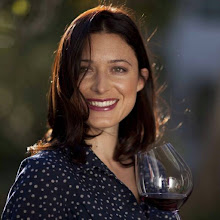 |
| Lonesome Dove by Larry McMurtry http://www.amazon.com/Lonesome-Dove-Larry-McMurtry/dp/067168390X |
Uva Uvam Vivendo Varia Fit
A Cellargal book & wine pairing inspired by the novel
Lonesome Dove
By Larry McMurtry
August 15th 2012
***
Bruno Michel "Blanche" Brut Champagne
From the villages of Pierry and Moussy in the sud-Epernay sub region of Champagne. Organic/biodynamic 53% Meunier and 47% Chardonnay. All vines are the estate’s own seleccion massale, meaning propogated and grafted from all 100% estate mother plants. http://www.klwines.com/detail.asp?sku=1022679
2011 Domaine de Reuilly Pinot Gris Rosé
Reuilly is an appellation in the eastern part of France's Loire Valley (sometimes referred to as "poor man's Sancerre) that is blessed to share the same Kimmeridgian clay and limestone terroir with neighboring Sancerre and Chablis to the north, which explains where these wines get their mineral drive and precision. Denis Jamain has been practicing sustainable agriculture for many years and has recently started the conversion process for organic certification.
2009 Domaine Rimbert "Le Mas au Schiste" Saint Chinian
Winemaker Jean-Marie Rimbert has a thing for Carignan, particularly Carignan from the northern edge of the Saint-Chinian appellation, where the soils are comprised of flaky schist. Named for the schisty soils of the region, but it also reveals some of Rimbert's playful side. Say it out loud and you can hear it--masochiste--since Rimbert thinks he must be one to farm the flaky, rocky, challenging vineyards that he does. The wine is comprised of equal parts Carignan, Syrah and Grenache. http://www.klwines.com/detail.asp?sku=1081165
2009 Chante Cigale Châteauneuf-du-Pape
“A blend of 60% Grenache, 20% Syrah and the rest Mourvedre and other varietals, the 2009 Chateauneuf du Pape is a round, generously endowed, corpulent effort with lots of garrigue, pepper, smoked meat, kirsch and raspberry fruit notes. This full-bodied, silky smooth, sexy Chateauneuf can be drunk over the next decade.” (RP) http://www.klwines.com/detail.asp?sku=1090413
2010 La Fleur des Pins Supérieures Graves Blanc
From a small commune in Graves bordering Sauternes, this noble sweet wine features a blend of 90% Semillon, 5% Sauvignon Blanc and 5% Muscadelle. As botrytis developed in the vineyard late in the 2010 growing season, the 50-year-old vines were harvested in 3-4 passes depending on the vineyard block. http://www.klwines.com/detail.asp?sku=1095887
Terms:
Terroir (French pronunciation: [tɛʁwaʁ] from terre, "land") is the special characteristics that the geography, geology and climate of a certain place, interacting with the plant's genetics, expressed in agricultural products such as wine, coffee, tomatoes, heritage wheat and tea. The concept has also crossed to other Protected Appellations of Origin (PDOs a form of Geographical Indication), products such as cheeses.
Terroir can be very loosely translated as "a sense of place," which is embodied in certain characteristic qualities, the sum of the effects that the local environment has had on the production of the product. Terroir is often italicized in English writing to show that it is a French loanword.
The concept of terroir is at the base of the French wine Appellation d'origine contrôlée (AOC) system that has been the model for appellation and wine laws across the globe. At its core is the assumption that the land from which the grapes are grown imparts a unique quality that is specific to that growing site. The amount of influence and the scope that falls under the description of terroir has been a controversial topic in the wine industry.[1]
Sélection massale: A breeding method wherein a large number of plants having the desirable traits are harvested individually from a standing crop. The seeds from all selections are then bulked. From the bulk, a seed sample is taken and used to plant a population from which desirable plants are selected at maturity. The procedure is repeated for several cycles until the population becomes uniform and homogeneous. A variety developed by mass selection is fairly uniform and contains fewer genotypes than the original population.
Botrytis/Noble rot (French: pourriture noble; German: Edelfäule; Italian: Muffa nobile) is the benevolent form of a grey fungus, Botrytis cinerea, affecting wine grapes. Infestation by Botrytis requires moist conditions. If the weather stays wet, the malevolent form, "grey rot," can destroy crops of grapes. Grapes typically become infected with Botrytis when they are ripe. If they are then exposed to drier conditions and become partially raisined this form of infection brought about by the partial drying process is known as noble rot. Grapes when picked at a certain point during infestation can produce particularly fine and concentrated sweet wine. Some of the finest Botrytized wines are literally picked berry by berry in successive tries (French for "selections").
Galets: The characteristic terroir of Châteauneuf-du-Pape comes from a layer of stones called galets ("pebbles"). The rocks are typically quartzite and remnants of Alpine glaciers that have been smoothed over millennia by the Rhône River. The stone retains heat during the day and releases it at night which can have an effect of hastening the ripening of grapes. The stones can also serve as a protective layer to help retain moisture in the soil during the dry summer months.[7]

No comments:
Post a Comment